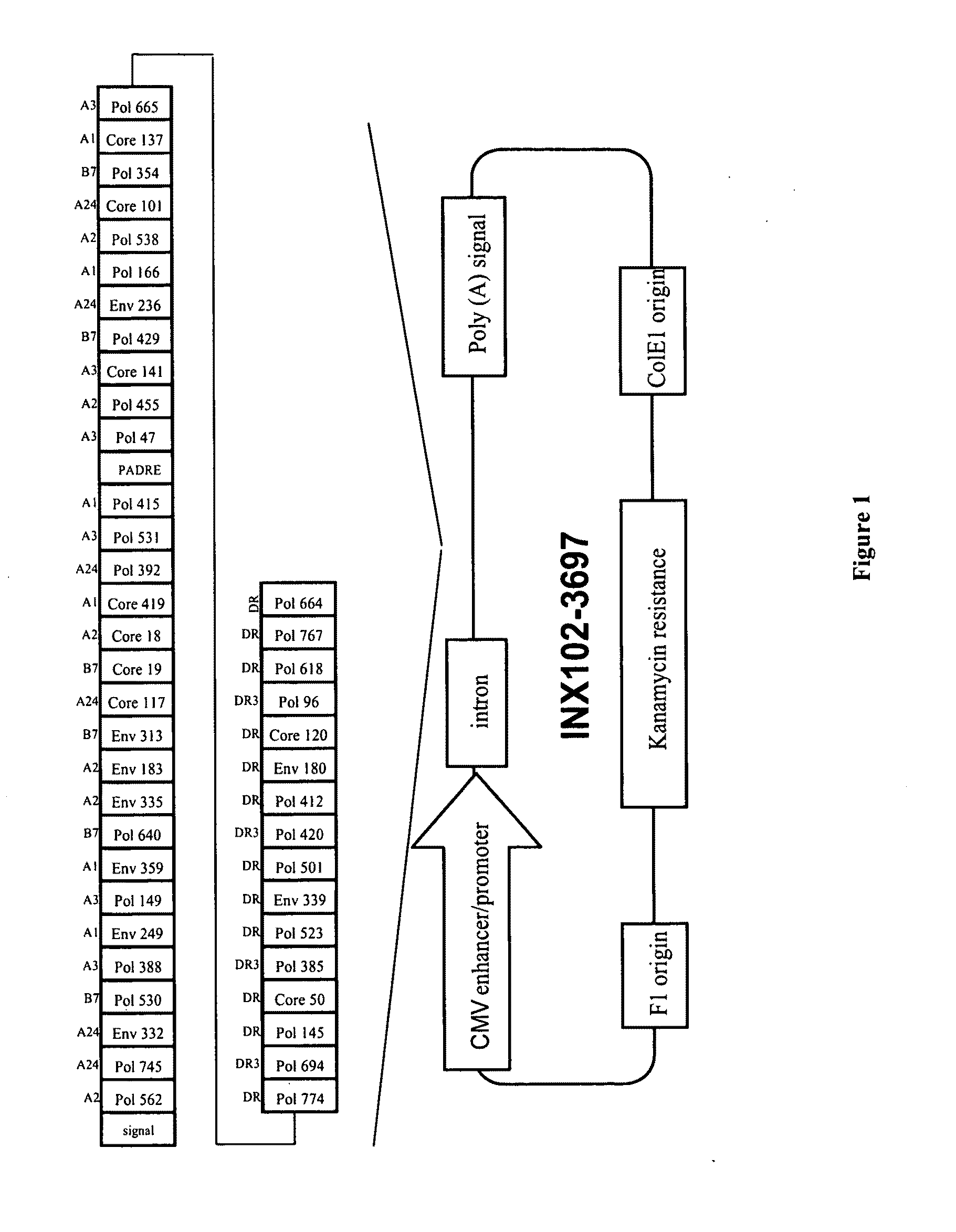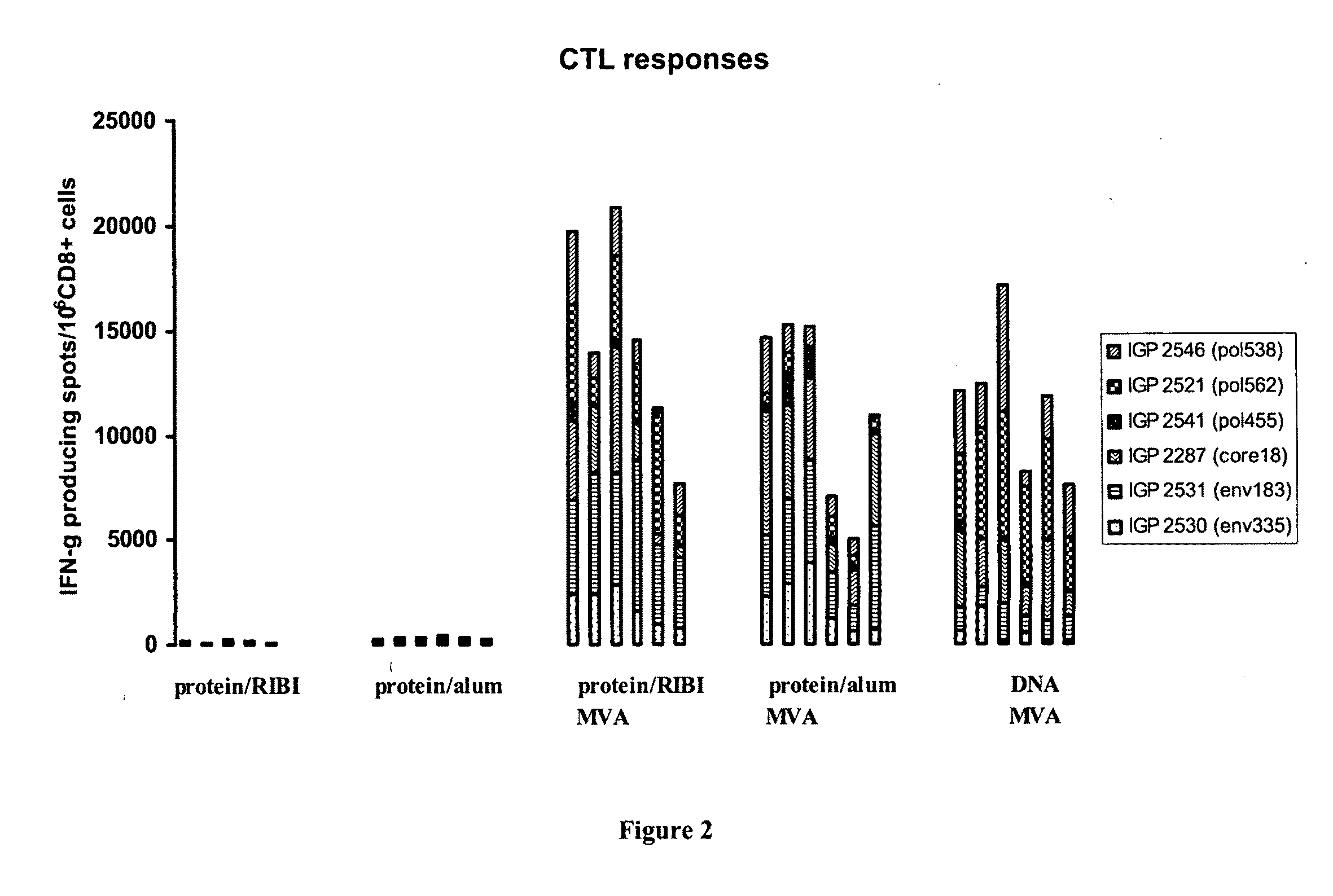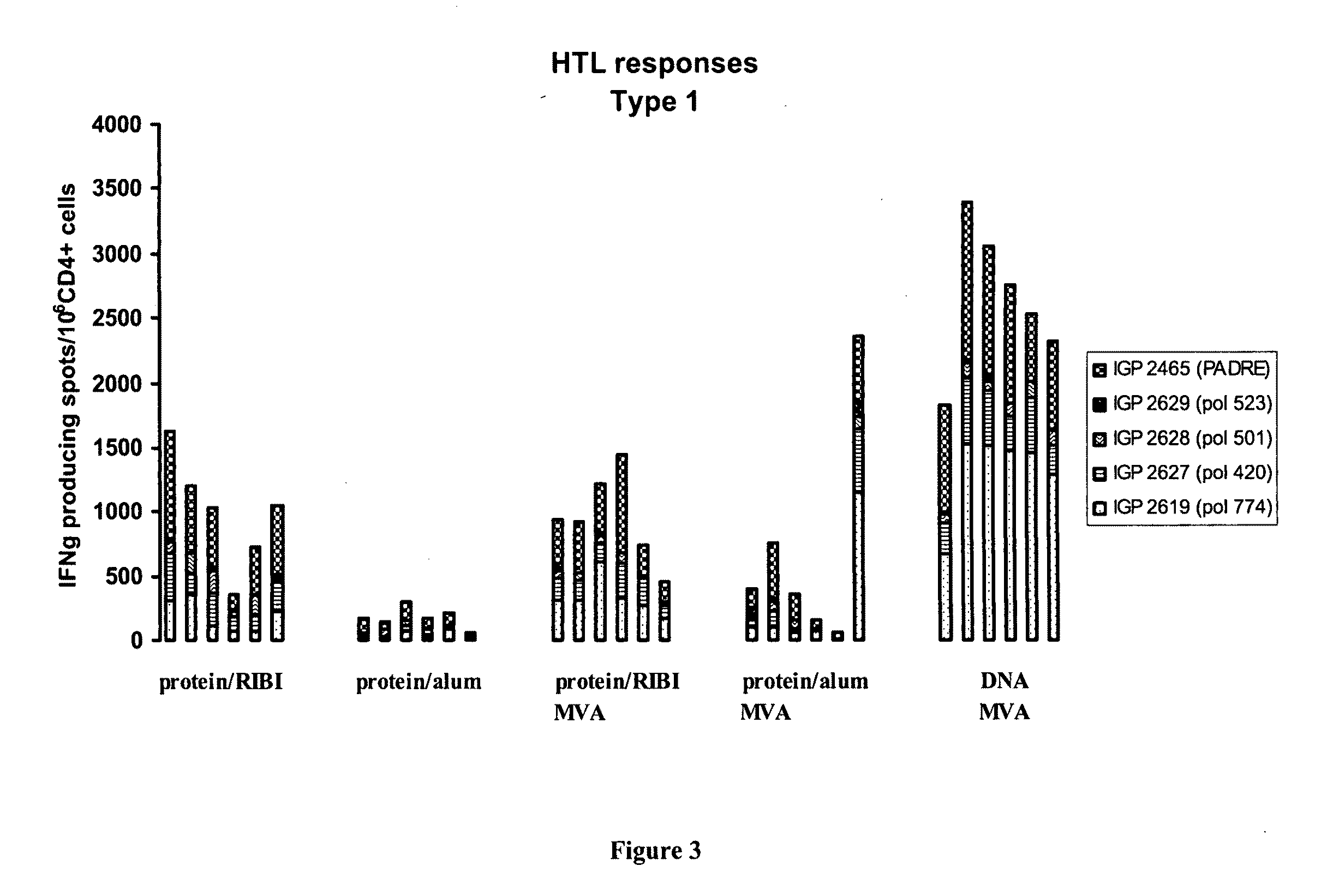Methods and kits for inducing a ctl response using a prime boost regimen
a ctl response and prime boost technology, applied in the field of t cell response generation, can solve the problems of limited vaccines and immunotherapies, ineffective ctl response induction, and difficult large-scale purification of large-scale polypeptides (more than 50 amino acids)
- Summary
- Abstract
- Description
- Claims
- Application Information
AI Technical Summary
Benefits of technology
Problems solved by technology
Method used
Image
Examples
example 1
Generation of a Polyepitope DNA Vector
[0139]1.1. HBV
[0140]The gene construct GCR-3697 as described in WO04 / 031210 (Pharmexa Inc.) was assembled using overlapping oligonucleotides in a PCR-based synthesis followed by subcloning into the pMB75.6 DNA plasmid vector (Wilson et al., 2003). Expression of the gene is driven by the CMV-IE promoter (FIG. 1). The DNA sequence was optimized to remove rare human codons and to reduce the ability to form potentially deleterious secondary RNA structures. Plasmid DNA (pDNA) was produced by growth in E. coli Stb12 strain (Invitrogen) in Terrific Broth with kanamycin (25 μg / ml) and purified using Qiagen Endotoxin-Free MegaPrep columns according to the manufacturer's directions (Qiagen USA, Valencia, Calif.). The purified pDNA HBV construct, (INX102-3697), was dissolved in water and stored at −70° C. For immunizations, the pDNA was formulated in 3.4% poly(N-vinyl pyrrolidone), 3 mg / ml ethanol and PBS, pH 7.4 at a concentration of 2 mg / ml.
[0141]1.2. HC...
example 2
Generation of HBV Polyepitope MVA Vector
[0143]A recombinant modified vaccinia virus Ankara (MVA), expressing the same HBV polyepitope protein as present in INX102-3697, was generated by homologous recombination into deletion III of MVATGN33 (Transgene, France) using a shuttle plasmid containing the pDNA HBV vaccine gene construct functionally linked to the vaccinia virus H5R early late promoter. The MVA vector (INX102-0557), was amplified and produced on chicken embryonic fibroblasts, purified by a multi-step low speed centrifugation process and resuspended in 10 mM Tris-HCl, 5% (w / v) saccharose, 10 mM sodium glutamate, 50 mM NaCl, pH 8.0 at an infectious titer of 3E+08 pfu / ml.
example 3
Generation of a Polyepitope Protein
[0144]Generation of Recombinant E. coli Strains
[0145]Based on the amino acid sequence of the HBV polyepitope protein (FIG. 15A—SEQ ID 95) an optimized coding sequence was designed and synthesized by GeneArt (Regensburg, Germany) using their GeneOptimizer sequence optimization software. During design, appropriate endonuclease restriction sites were introduced in the 5′ and 3′ flanking regions to simplify subcloning into the expression vectors, and a metal-affinity tag (tag represented by the amino acid sequence HHHMFHHHWWHHHMWHHH (LHH11), SEQ ID NO 97; or a hexahistidine tag (His-6), SEQ ID NO105) was added preceded by a two amino acid (NA) linker sequence. In case of His-6, the tag was preceded by a small linker sequence of 5 amino acids (PGSLE, SEQ ID NO 106) for subcloning purposes.
[0146]Based on the amino acid sequence of the HCV polyepitope protein (FIG. 15B—SEQ ID 96) an optimized coding sequence was designed and synthesized by GeneArt (Regens...
PUM
| Property | Measurement | Unit |
|---|---|---|
| Time | aaaaa | aaaaa |
| Cytotoxicity | aaaaa | aaaaa |
Abstract
Description
Claims
Application Information
 Login to View More
Login to View More - R&D
- Intellectual Property
- Life Sciences
- Materials
- Tech Scout
- Unparalleled Data Quality
- Higher Quality Content
- 60% Fewer Hallucinations
Browse by: Latest US Patents, China's latest patents, Technical Efficacy Thesaurus, Application Domain, Technology Topic, Popular Technical Reports.
© 2025 PatSnap. All rights reserved.Legal|Privacy policy|Modern Slavery Act Transparency Statement|Sitemap|About US| Contact US: help@patsnap.com



